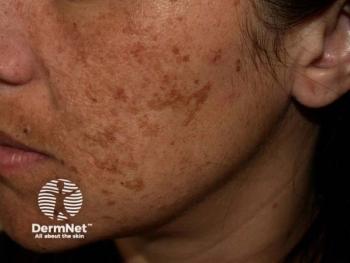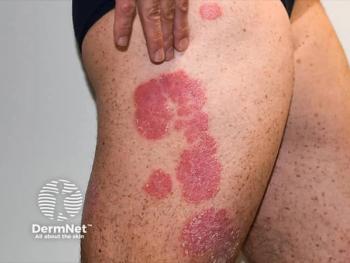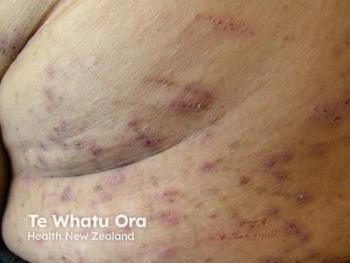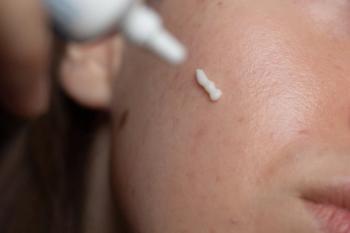
Journal Digest: July 2, 2025
Key Takeaways
- Biologics, especially ixekizumab, showed superior PASI responses in psoriasis treatment, with methotrexate and phototherapy being most cost-effective.
- Bubble hair deformity was linked to bathroom heating lamps, marking a novel association distinct from previous cases involving hair dryers.
This review of the latest dermatologic studies includes insights into effectiveness and cost-effectiveness of treatments for psoriasis, bubble hair deformity induced by bathroom heating lamp, and more.
Dermatologic Therapy: Comprehensive Analysis of Effectiveness and Cost-Effectiveness of Treatments for Psoriasis Integrating Clinician- and Patient-Reported Outcomes: A Cohort Study From SPEECH
A prospective, real-world cohort study from the Shanghai Psoriasis Effectiveness Evaluation CoHort (SPEECH) evaluated the comparative effectiveness and cost-effectiveness of several psoriasis treatments, including conventional systemic therapies, phototherapy, and biologics. Among 1916 patients with chronic plaque psoriasis, those receiving biologics, particularly ixekizumab, secukinumab, guselkumab, and ustekinumab, achieved higher rates of PASI 75, PASI 90, and PASI 100 responses at 12 weeks compared to those treated with acitretin. When factoring in both clinician- and patient-reported outcomes, methotrexate and phototherapy offered the most favorable cost-effectiveness profiles, while ixekizumab was the most cost-effective among biologics.1
Journal of Cosmetic Dermatology: Bubble Hair Deformity Induced by Bathroom Heating Lamp: A Report of Two Cases
A case report describes 2 instances of bubble hair deformity in young men triggered by close exposure to bathroom heating lamps. Both patients presented with dry, brittle, and broken hair localized to areas near the scalp’s exposure to the heat source during showers. Dermoscopy and light microscopy confirmed hallmark features of bubble hair, including broom-like shaft fractures and intrahair air bubbles. Unlike previous reports, typically involving Caucasian females using hair dryers, these cases represent the first known association with bathroom heating lamps. Both patients improved with conservative management and heat avoidance.2
The Journal of Dermatology: Treatment Satisfaction, Efficacy, and Safety of Delgocitinib Ointment for Atopic Dermatitis-Induced Rash on the Face and Neck: Efficacy at Reducing Local Side Effects of Topical Steroid and Tacrolimus Ointment
An open-label, single-arm study in Japan evaluated the safety, efficacy, and patient satisfaction of 0.5% delgocitinib ointment for treating facial and neck lesions in patients with atopic dermatitis previously using topical steroids or tacrolimus. Over 12 weeks, 38 adults applied delgocitinib twice daily. Treatment led to significant improvements in global satisfaction, itch severity, skin appearance, and disease control scores, with reduced rates of local side effects like skin atrophy and telangiectasia. Nearly 80% of patients preferred delgocitinib over their prior therapies.3
JEADV Clinical Practice: Superficial Pustular Folliculitis of the Face and Neck—A Non-Infectious Eruption Responding to Topical Steroids
A retrospective study from southern Taiwan has identified a distinct clinical entity characterized by tiny, superficial follicular pustules on the face and neck predominantly affecting young women, which the authors propose naming superficial pustular folliculitis of the face and neck (SPFFN). Over a 5-year period, 27 patients presented with monomorphous, recurrent pustules lasting up to a month and often resolving within a week. Most cases responded rapidly to low-potency topical steroids, with 96% achieving full clearance. Histopathology showed infundibular neutrophilic pustules and mild dermal inflammation. Importantly, common causes such as acne, rosacea, demodicosis, and Ofuji's disease were excluded.4
JAMA Dermatology: Climate Conditions, Weather Changes, and Air Pollutants and Atopic Dermatitis
A systematic review and meta-analysis of 42 studies across 14 countries assessed the link between climate change and environmental pollutants with atopic dermatitis outcomes. The findings suggest a significant increase in atopic dermatitis-related emergency visits and outpatient clinic visits for every 10-μg/m3 rise in ambient air pollutants such as particulate matter (PM10 and PM2.5), sulfur dioxide, and nitrogen dioxide. Temperature extremes were also associated with more severe atopic dermatitis.5
References
- Yu N, Wang Y, Cui L, et al. Comprehensive analysis of effectiveness and cost-effectiveness of treatments for psoriasis integrating clinician- and patient-reported outcomes: a cohort study from SPEECH. Dermatol Ther. Published June 24, 2025.
doi:10.1155/dth/9464860 - Wu D, Wu L, Xu J. Bubble hair deformity induced by bathroom heating lamp: a report of two cases. J Cosmet Dermatol. Published June 26, 2025.
doi:10.1111/jocd.70312 - Abe M, Igarashi A, Kitajima H, Toyama H, Kabashima K, Saeki H. Treatment satisfaction, efficacy, and safety of delgocitinib ointment for atopic dermatitis-induced rash on the face and neck: efficacy at reducing local side effects of topical steroid and tacrolimus ointment. J Dermatol. Published June 26, 2025.
doi:10.1111/1346-8138.17817 - Huang H-P, Huang C-M, Hsu C-K, Yang C-C, Lee JY-Y. Superficial pustular folliculitis of the face and neck—a non-infectious eruption responding to topical steroids. JEADV Clin Pract. Published June 23, 2025.
doi:10.1002/jvc2.70102 - Park M, Mohsen ST, Katz T, et al. Climate conditions, weather changes, and air pollutants and atopic dermatitis: a meta-analysis. JAMA Dermatol. Published online June 25, 2025.
doi:10.1001/jamadermatol.2025.1790
What new studies have you been involved with or authored? Share with us by emailing
Newsletter
Like what you’re reading? Subscribe to Dermatology Times for weekly updates on therapies, innovations, and real-world practice tips.


















